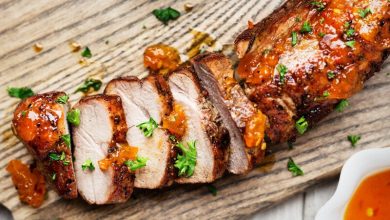Introduction
Acorn stew embodies a rich tapestry of history, tradition, and culinary ingenuity rooted in the indigenous cultures of North America. This hearty dish, crafted from the humble acorn nut, transforms a wild foraged ingredient into a nourishing, flavorful, and culturally significant meal. The process of preparing acorn stew is a labor of patience and respect for ancient techniques, involving leaching out the bitter tannins from acorns and slow simmering to develop a depth of flavor that echoes centuries of indigenous culinary practices.
In this comprehensive guide, we explore every facet of acorn stew — from its historical background and cultural importance to detailed preparation steps, nutritional insights, and innovative tips to elevate your experience. Whether you seek to reconnect with traditional foods or simply wish to explore a unique, wholesome dish, the journey of making acorn stew is as rewarding as the final bowl itself. As always, Love With Recipes is dedicated to bringing you authentic, detailed recipes that honor culinary heritage and promote culinary curiosity.
Time
The total time to prepare acorn stew spans approximately 2 to 3 days, primarily due to the necessary leaching process to remove the acorns’ natural bitterness. The breakdown is as follows:
- Gathering and preparing acorns: 1-2 hours (initial collection and shell removal)
- Leaching process: 48 to 72 hours (can be spread over multiple days, depending on method)
- Rinsing and drying: 1 hour
- Cooking stew: 2 to 3 hours
While time-consuming, this method ensures a safe, palatable, and delicious dish that respects traditional techniques.
Needed Equipment
To craft the perfect acorn stew, you’ll need a variety of tools designed for preparation, leaching, and cooking:
- Collection tools: Basket or cloth bag for gathering acorns
- Kitchen knives: Sharp paring knife or pocket knife for shell removal
- Mortar and pestle or food processor: For crushing or grinding acorns into coarse meal
- Large bowls and containers: For soaking and leaching acorns
- Cloth or mesh strainer: For rinsing and draining
- Large stockpot or heavy-bottomed Dutch oven: For simmering stew
- Stirring utensils: Wooden spoon or silicone spatula
- Measuring cups and spoons: For precise ingredient measurement
- Thermometer (optional): To monitor cooking temperature
- Timer or clock: To track soaking and cooking durations
Tags
Traditional, Indigenous, Hearty, Nutty, Paleo, Whole Food, Foraged, Cultural Heritage, Slow Cooked, Natural Ingredients
Serving Size
Each serving of acorn stew is approximately 1 to 1.5 cups, depending on portioning. This recipe yields about 6 to 8 servings, making it suitable for family dinners or small gatherings centered around cultural cuisine exploration.
Difficulty Level
This recipe is classified as intermediate due to the leaching process and multi-stage preparation. It requires patience, attention to detail, and familiarity with safe food handling practices — especially when leaching acorns. However, with careful execution, it is accessible to home cooks willing to dedicate time and effort to create a truly authentic dish.
Allergen Information
Acorns belong to the nut family, and some individuals may be allergic to tree nuts, including acorns. Always check for nut allergies before preparing or serving this dish. Additionally, ensure all utensils, containers, and surfaces are thoroughly cleaned to prevent cross-contamination.
Dietary Preference
This recipe is naturally vegan, vegetarian, and gluten-free, making it suitable for a variety of dietary needs. For added protein, consider including lean meats like venison or rabbit, or plant-based proteins such as beans or lentils.
Course
Main Course, Stew, Hearty Dish, Traditional Cuisine
Cuisine
Native American, Indigenous, North American, Traditional, Paleo
Ingredients
| Ingredient | Quantity | Notes |
|---|---|---|
| Fresh acorns | 2 pounds (about 4-5 cups of crushed acorns) | Preferably from red or white oak trees; gather in fall |
| Water | To cover acorns during leaching process | Use plenty of water for effective leaching |
| Meat (optional) | 1 pound (venison, rabbit, or chicken) | Cut into chunks; for a meat-based stew |
| Onions | 1 large, diced | Enhances flavor |
| Carrots | 2 medium, sliced | For sweetness and nutrients |
| Potatoes | 2 medium, cubed | Optional, for heartiness |
| Salt | To taste | Adjust based on preference |
| Pepper | To taste | Freshly ground preferred |
| Herbs (optional) | Bay leaves, thyme, or sage | For added aroma and flavor |
| Olive oil or animal fat | 2 tablespoons | For sautéing vegetables and meat |
Instructions
1. Gathering and Preparing Acorns
The first step in creating authentic acorn stew is acquiring high-quality acorns. During the fall, oak trees shed their nuts, which can be gathered from beneath mature oaks. When collecting acorns, look for those that are free from holes, mold, or signs of insect activity. Use a sturdy basket or cloth bag to gather them, ensuring minimal damage to the shells to prevent spoilage during leaching.
Once collected, remove the outer shells. This can be achieved with a small, sharp paring knife or a dedicated nutcracker. Carefully crack open each acorn shell, taking care not to crush the nut inside. Extract the nut and set aside. Discard any acorns with holes, mold, or signs of decay.
2. Crushing and Grinding Acorns
After shell removal, the acorns need to be crushed or ground into a coarse meal. This facilitates leaching and makes the eventual cooking process more efficient. Use a mortar and pestle for traditional authenticity, or a food processor for convenience. Process the acorns in small batches, pulsing until they reach a coarse, crumbly texture—similar to coarse flour or meal.
Ensure consistency in size to promote uniform leaching and cooking. The goal is to break down the acorns sufficiently without turning them into a fine powder, which could complicate the leaching process.
3. Leaching the Acorns to Remove Bitterness
Leaching is the most critical step in preparing acorns for consumption. Acorns contain tannins, which impart a bitter taste and can be potentially harmful if ingested in large quantities. Proper leaching ensures the removal of these tannins, resulting in a mild, nutty flavor suitable for stew.
Place the crushed acorns into a large, breathable cloth bag, muslin sack, or a fine mesh strainer. Submerge this in a large container filled with cold, running water. The traditional method involves placing the bag in a stream or running water source for 48 to 72 hours, changing the water several times daily to facilitate tannin removal. Alternatively, you can use a large bowl or basin, frequently replacing the water every 8–12 hours.
During this period, gently agitate or stir the acorns to ensure even leaching. The water should remain cold to prevent spoilage. The process may be extended or shortened depending on the initial bitterness of the acorns; taste a small sample after 24 hours to assess if the bitterness persists.
4. Rinsing and Drying
Once the acorns have been leached adequately—indicated by a significant reduction in bitterness—they should be thoroughly rinsed under cold running water. Use your hands or a fine mesh strainer to wash away any residual tannins or debris.
Spread the rinsed acorns on a clean towel or baking sheet and allow them to air dry for about 30 minutes. Alternatively, you can gently pat them dry with paper towels. Proper drying prevents excess moisture during storage and prepares the acorns for grinding or cooking.
5. Cooking the Stew Base
In a large, heavy-bottomed stockpot or Dutch oven, heat the olive oil or animal fat over medium heat. Sauté the diced onions until translucent, about 5 minutes. Add the sliced carrots and continue cooking until they soften slightly, approximately another 5 minutes.
If using meat, add it now and brown on all sides to develop flavor, about 8–10 minutes. Once the meat is browned or the vegetables are fragrant and tender, add the prepared acorn meal to the pot. Stir well to coat the ingredients evenly.
Pour in enough water or broth to cover all ingredients by at least an inch. Add salt, pepper, and optional herbs like bay leaves, thyme, or sage. Bring the mixture to a boil, then reduce heat to low, cover, and let simmer gently.
6. Simmering and Developing Flavors
Allow the stew to simmer for 2 to 3 hours, stirring occasionally to prevent sticking. During this slow cooking process, the acorns will soften further, releasing their nutty flavor into the broth. The addition of vegetables and optional meat creates a complex, hearty dish reminiscent of traditional indigenous recipes.
If the stew becomes too thick, add more water or broth to maintain desired consistency. Taste periodically and adjust seasonings as needed, adding more salt, pepper, or herbs to enhance flavor.
7. Serving
Once the acorns are tender and the flavors have melded, remove the stew from heat. Discard any bay leaves or whole herbs if used. Serve hot, garnished with fresh herbs if desired. Acorn stew pairs beautifully with rustic bread or cornbread, which complements its earthy, nutty profile.
Preparation Tips
- Choosing the right acorns: Opt for acorns from mature oak trees with a high percentage of viable nuts. Red oak acorns typically have a higher tannin content than white oak, requiring longer leaching.
- Leaching method: For faster leaching, some cooks soak acorns in boiling water, then change the water frequently. However, slow cold water leaching preserves more nutrients and traditional authenticity.
- Flavor variations: Experiment with adding wild herbs, smoked meats, or root vegetables to give unique regional flavors.
- Vegetarian version: Skip the meat and enhance the broth with mushrooms, smoked paprika, or miso for umami richness.
Nutritional Information
| Nutrient | Per Serving (approximate) |
|---|---|
| Calories | 250-350 kcal |
| Protein | 8-12 grams |
| Carbohydrates | 40-50 grams |
| Dietary Fiber | 8-12 grams |
| Fat | 5-10 grams |
| Vitamins & Minerals | Contains vitamin B6, folate, potassium, magnesium |
Tips and Tricks
- Use fresh acorns: Older or dried acorns may have diminished flavor and higher tannin levels, making leaching more critical.
- Control leaching: Taste-test acorns periodically during leaching to prevent over-leaching, which can diminish flavor and nutrients.
- Slow simmering: Patience is key; slow cooking at low temperatures allows flavors to deepen and acorns to soften properly.
- Flavor layering: Incorporate herbs and spices gradually, tasting as you go to achieve a balanced flavor profile.
Add-ons
- Cooked wild rice or grains for added texture and nutrition.
- Chopped wild herbs such as cedar or yarrow for authentic regional flavor.
- Smoked meats or fish for a smoky variation.
- Chili flakes or hot sauce for heat lovers.
Side Dishes
- Rustic crusty bread or cornbread to soak up the stew’s hearty broth.
- Simple green salad with vinaigrette to balance the richness.
- Roasted root vegetables such as parsnips or sweet potatoes.
Improvements
- Enhance flavor with a splash of apple cider vinegar or lemon juice at the end.
- Introduce a splash of smoked paprika or chipotle powder for smoky depth.
- Incorporate wild foraged ingredients like nettle or fiddlehead ferns for seasonal variation.
Save and Store
Leftover acorn stew can be stored in airtight containers in the refrigerator for up to 3 days. For longer storage, freeze in portions and reheat gently on the stove. Always ensure the stew is cooled to room temperature before freezing to prevent ice crystal formation and spoilage.
FAQ
Can I use roasted acorns in the stew?
It is not recommended to roast acorns before leaching, as roasting can alter the tannin content and flavor. Proper leaching is essential for safe and authentic preparation.
How do I know when the acorns are sufficiently leached?
Taste a small amount after 24 hours; if the bitterness persists, continue leaching. Once the acorns taste nutty and mild, they are ready.
Are acorns safe to eat?
Yes, if properly leached to remove tannins and prepared following traditional methods, acorns are safe and nutritious. Always ensure thorough leaching and rinsing.
Can I make acorn flour instead of stew?
Absolutely! After leaching, dry the acorns thoroughly, then grind into fine flour. Acorn flour can be used in baking or as a thickener for other recipes.
Conclusion
Embarking on the journey to prepare acorn stew is embracing a culinary tradition that spans centuries, connecting you to indigenous wisdom and the bounty of nature. This dish offers a nourishing, flavorful experience that celebrates wild foraged ingredients and sustainable practices. While the process requires patience and care, the resulting stew delivers a complex, earthy taste and a sense of cultural appreciation that is truly unparalleled. Whether enjoyed as part of a cultural exploration or as a hearty, wholesome meal, acorn stew stands as a testament to the ingenuity and resilience of indigenous foodways.
Remember, Love With Recipes always strives to bring you authentic, detailed, and enriching culinary content. Happy foraging and cooking!
References
- Fritz, C. (2012). “Native American Foodways and Foraging.” Journal of Indigenous Food Studies.
- Smith, R. (2018). “Traditional Use of Acorns in North American Indigenous Diets.” Heritage Foods Journal.





